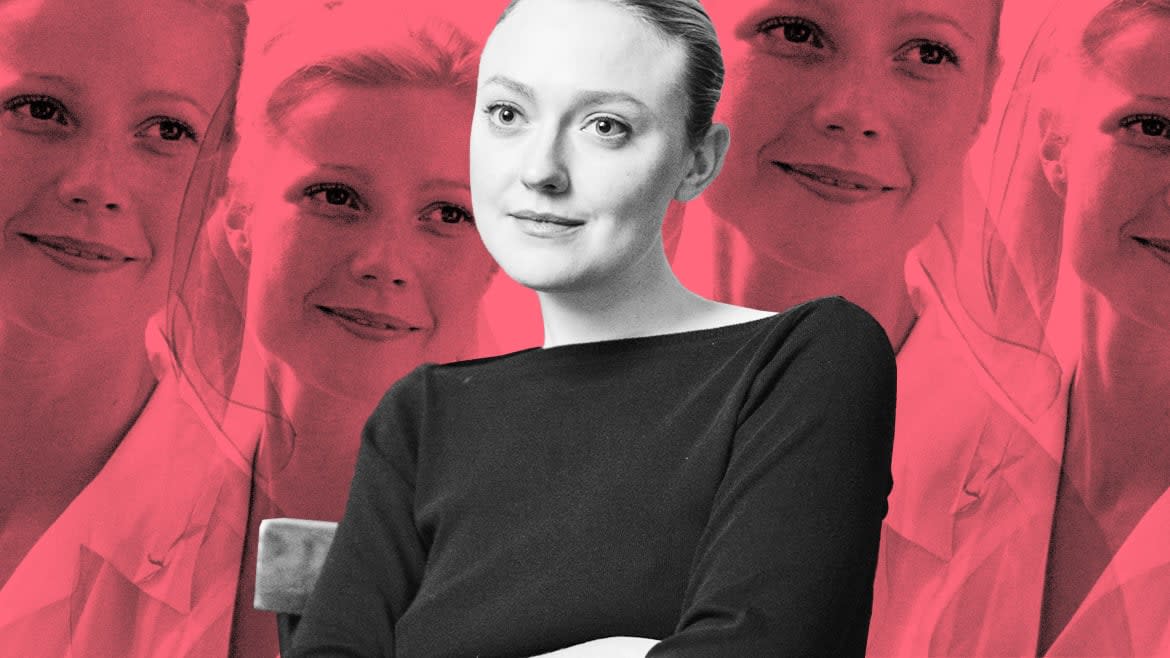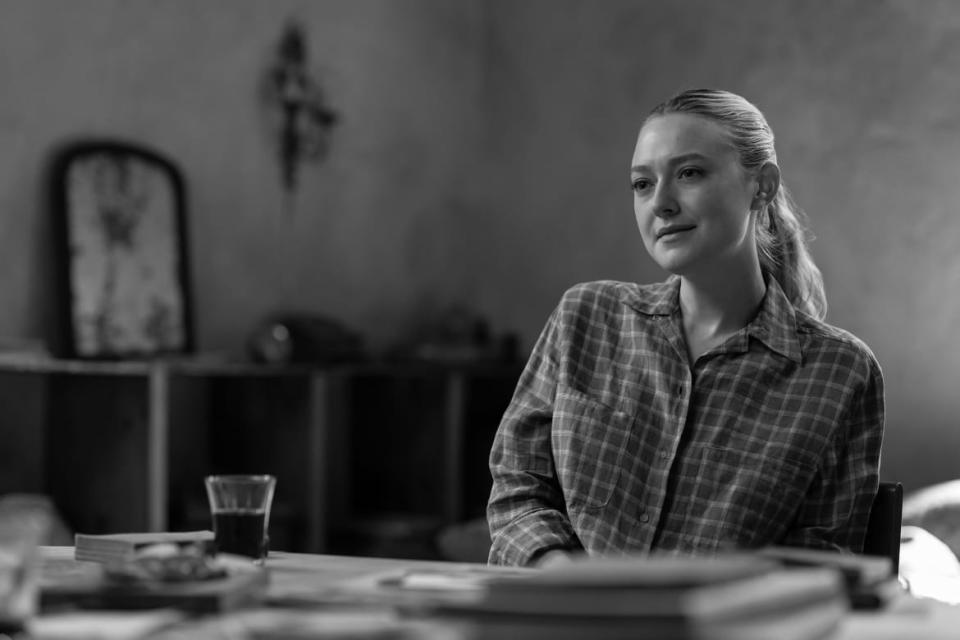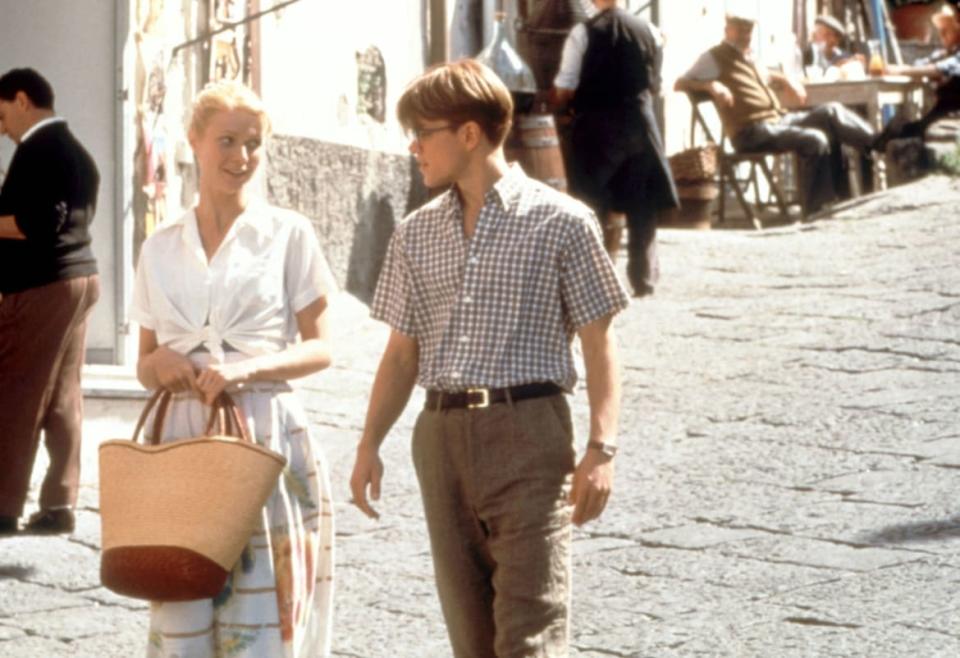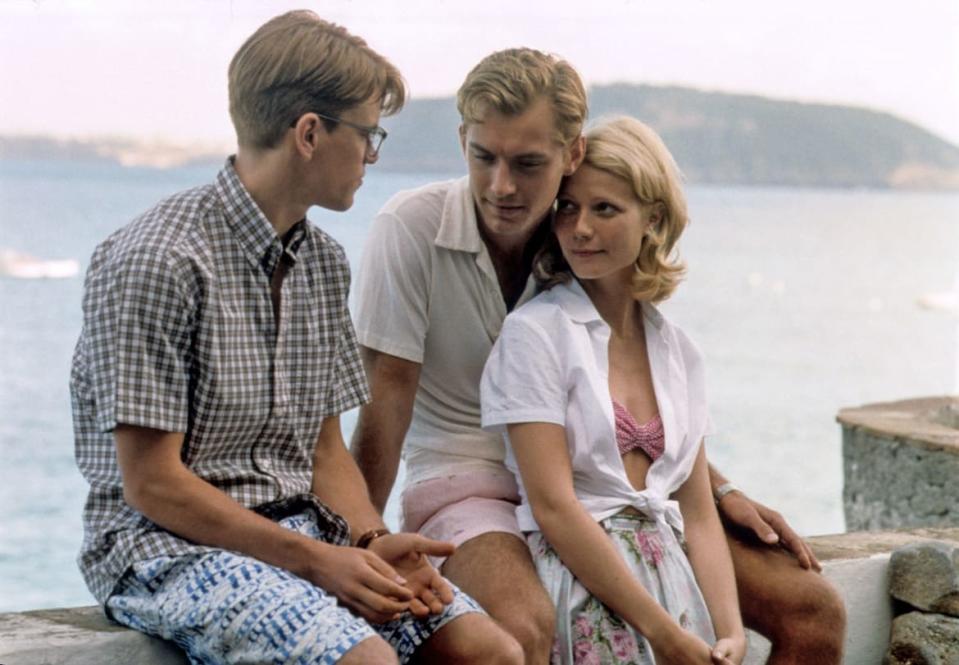Dakota Fanning’s Marge Is an Unexpectedly Perfect Villain for ‘Ripley’

- Oops!Something went wrong.Please try again later.
Like every adaptation of Patricia Highsmith’s The Talented Mr. Ripley, Netflix’s new rendition follows Thomas Ripley as he travels through Europe after murdering his friend Dickie Greenleaf and stealing his identity. This may be the second of two fantastic performances Andrew Scott has delivered in the last six months, but it’s Dakota Fanning’s turn as Marge Sherwood that shines in Netflix’s Ripley—in ways that past versions of the character never could.
While Tom believes himself to be the ultimate outsider, he and Marge are two sides of the same coin. Deep down, the titular character knows this, and it makes his hatred of her grow. But, instead of being a side character who simply gets on Tom’s nerves—as in Anthony Minghella’s 1999 film, the best-known film based on Highsmith’s novel—Marge uses his hatred for her to her advantage, reinventing her character along the way.
The Greatness of ‘Ripley’ Hinges on a Gorgeously Brutal Murder
The two are clearly separate factions warring for the same man’s attention, and cracking each other's resolve as Tom and Dickie grow closer. Unlike Paltrow’s version of the character in the 1999 film, Fanning’s Marge is suspicious of Tom from the very beginning. In the Netflix series’ penultimate episode, “Macabre Entertainment,” she tells Inspector Pietro Ravini (Maurizio Lombardi), who is looking for Tom, that he is the “kind of person who takes advantage of other people”—but then maybe, so is she. Her love for Dickie (Johnny Flynn) is like Tom’s love for him: superficial. Here, Dickie is less magnetic than in the 1999 film version, which works if we think about Marge and Tom being obsessed with the idea of Dickie rather than the actual man.
It works well for this grimmer rendition, where two characters are battling it out, each trying to one-up the other like they’re playing a game of chess. And whenever Tom and Marge are on screen, that’s what it feels like they’re trying to do. When Tom and Marge are together in the first few episodes, he acts not as the illusive man we see when he’s alone. Rather, he is almost catty with her, allowing for awkward pauses in his conversations with Dickie to overwhelm the room each time she enters. Often, when his facade wavers, it’s as if her mere presence is revolting to him and he can’t stamp out the look of disgust on his face. Likewise, Marge is disgusted by Tom, letting out an exasperated breath whenever she finds herself in his presence.

Dakota Fanning as Marge Sherwood in Ripley.
There’s a lot here that’s different from this story’s most famous version, but Marge not simply being a victim of Tom’s jealousy is perhaps the biggest change. In writer-director Steven Zaillian’s new interpretation, she is the villain in Tom’s story and, at times, also to us. Her animosity toward Tom—while warranted—begins before he commits murder, and while she’s right about him in the end, this introduction to her feels off-putting. Tom’s boyish disposition in the first two episodes makes him come across as someone we can trust and even see ourselves in, and Marge’s reaction to his charm later on forces us into his shoes, rather than hers. Even after Tom has killed Dickie, it feels nearly impossible to hate him, with Scott’s beautiful face obscuring any trace of villainy once you get lost in his eyes.
Her slick apathy is entirely purposeful, provoking Tom in a way that showcases how much she wants him to understand that he doesn’t belong in the life she has with Dickie. Yet, there’s a mention that Marge is from small-town Minnesota, which alludes to a modest past—more like the one Tom previously led than the luxurious life she now has. The two of them are more similar than either would like to think, and they both are seen attempting to get a leg up in life by bonding with a rich (yet sadly dull in comparison with 1999’s Jude Law) playboy.
How ‘Ripley’ Became TV’s Most Beautiful Masterpiece
This take on Marge is fresher than Paltrow’s, her most recent on-screen counterpart. Here, she is not only a direct foil for Tom but also a mirror for him to see himself every time they share a scene. It’s as if each time they reunite, Tom is forced out of the disguise he wears and made to confront his normalness. He doesn’t just want Marge off his case to escape his criminality; he wants her gone because she represents a version of himself he knows he will ultimately never be allowed to achieve. She’s beautiful, young, and, most importantly to Tom, Dickie’s girlfriend. Instead of exhibiting these qualities at face value, Zaillian’s adaptation allows Marge to wield these aspects of herself like a weapon.
Before Dickie’s death, Marge has the upper hand in this fight for his affection, because she’s actually in a relationship with him, but that doesn't stop her insecurity from showing, nor does it stop Tom from using that to his advantage. It’s not only the main point of contention between Tom and Marge; it's also a central theme to both of their arcs. She is both jealous of Dickie’s time spent with Tom and genuinely threatened by him. She’s also repulsed by the thought that the two men may hold a love for each other that she can’t understand. Tom, on the other hand, is repulsed by his not being able to inhabit the life and love that Marge has with Dickie.

Matt Damon and Gwyneth Paltrow in 1999’s The Talented Mr. Ripley.
While every other rendition of Marge is simply there, Fanning’s version is so present that she haunts the new life Tom is trying to build (and the old one he’s attempting to bury) by killing Dickie and stealing his identity. This switch in her character arc makes her not only more interesting to watch but also impossible to look away from. Fanning is impassive and cold in a way that is perfect for the world Highsmith originally created, not only more possessed than Paltrow’s portrayal but more layered as well.
As the series progresses and her character becomes even more wary of Tom, Marge in turn begins to emulate him, just like he has been emulating Dickie. Like Scott as Tom, Fanning’s Marge slinks around her scenes, hiding a smirk beneath her lips; it’s as if she not only knows more than Tom, but more than the audience as well.
Despite Marge’s outwardly enigmatic persona, Tom and Marge seem to know what the other wants and how they operate on a deeper level. In Episode 7, “Narcissus,” when the two attend Pegeen Guggenheim’s party together, Marge appears to see an older, lonelier version of herself in Tom, while he sees a more outgoing and stable version of himself in her. But it’s in the series’ eighth and final episode that the two realize they are both masquerading as people they aren’t. It’s as if it’s impossible for them to continue to conceal their true feelings or maintain the masks they wear when they’re together. In each other’s presence, they unravel, making them both more vulnerable to each other than they have ever perhaps been with Dickie.

Dakota Fanning as Marge Sherwood and Johnny Flynn as Dickie Greenleaf in Ripley.
As the series nears its end, it becomes clearer that Tom cannot escape Marge, despite trotting through Europe to avoid her and the investigation his messiness has left behind. While Inspector Pietro Ravini seems to simply annoy Tom, it’s Marge’s presence that truly frightens him when his new life begins to crumble under the weight of a second murder and even more mistakes. The knowing look in Marge’s eye proves that she understands how she can unmask Tom, and she holds this power over him each time they reunite.
It’s Impossible to Overstate Just How Good Netflix’s ‘Ripley’ Is
While prior versions of the character feel more like a caricature of what Marge is supposed to represent to Tom, Fanning’s take is so front and center that she occupies Tom’s mind almost as much as Dickie. Rather than Dickie’s disappearance driving Marge to madness, in Netflix’s Ripley, it invigorates her, forcing the character to become an active participant in the narrative. In the 1999 film, Tom uses Marge’s emotions against her. Here, he’s incapable of doing so. Instead, her hatred for him is so strong that she’s willing to use it to not only find out what truly happened to Dickie, but to also continue forcing Tom to realize that he still does not belong in the life she had with her partner. In turn, in one of their final moments together, Tom has the opportunity to kill Marge, yet he can’t bring himself to do it. Instead, he stares at her back as she looks out at the water near the front steps of his apartment, before calling her name and inviting her inside.

Matt Damon, Jude Law, and Gwyneth Paltrow in The Talented Mr. Ripley.
Marge’s disdain for Tom grows with each interaction, and so does Tom’s tolerance for Marge. Despite their immediate mutual hatred, the two are now inextricably linked by Dickie’s death. By killing him, Tom hasn’t rid himself of the man or Marge; he has embedded himself even deeper into her life. In Ripley’s final moments, just when it looks like the dust has settled and Tom has finally proved his innocence, Inspector Ravini opens the first page of Marge’s book, a copy of which she has graciously mailed to him. It’s dedicated to Dickie, and a full-size picture of him—the real him—graces the bottom of the page. Without even meaning to, Marge holds the power to make Thomas Ripley and his life unravel. She continues to haunt him, and the show, in a way that would seem unfathomable for her other renditions. But here, in the end, by holding her hatred for Tom so close to her heart, Fanning’s Marge deservedly gets the last laugh.
Get the Daily Beast's biggest scoops and scandals delivered right to your inbox. Sign up now.
Stay informed and gain unlimited access to the Daily Beast's unmatched reporting. Subscribe now.

